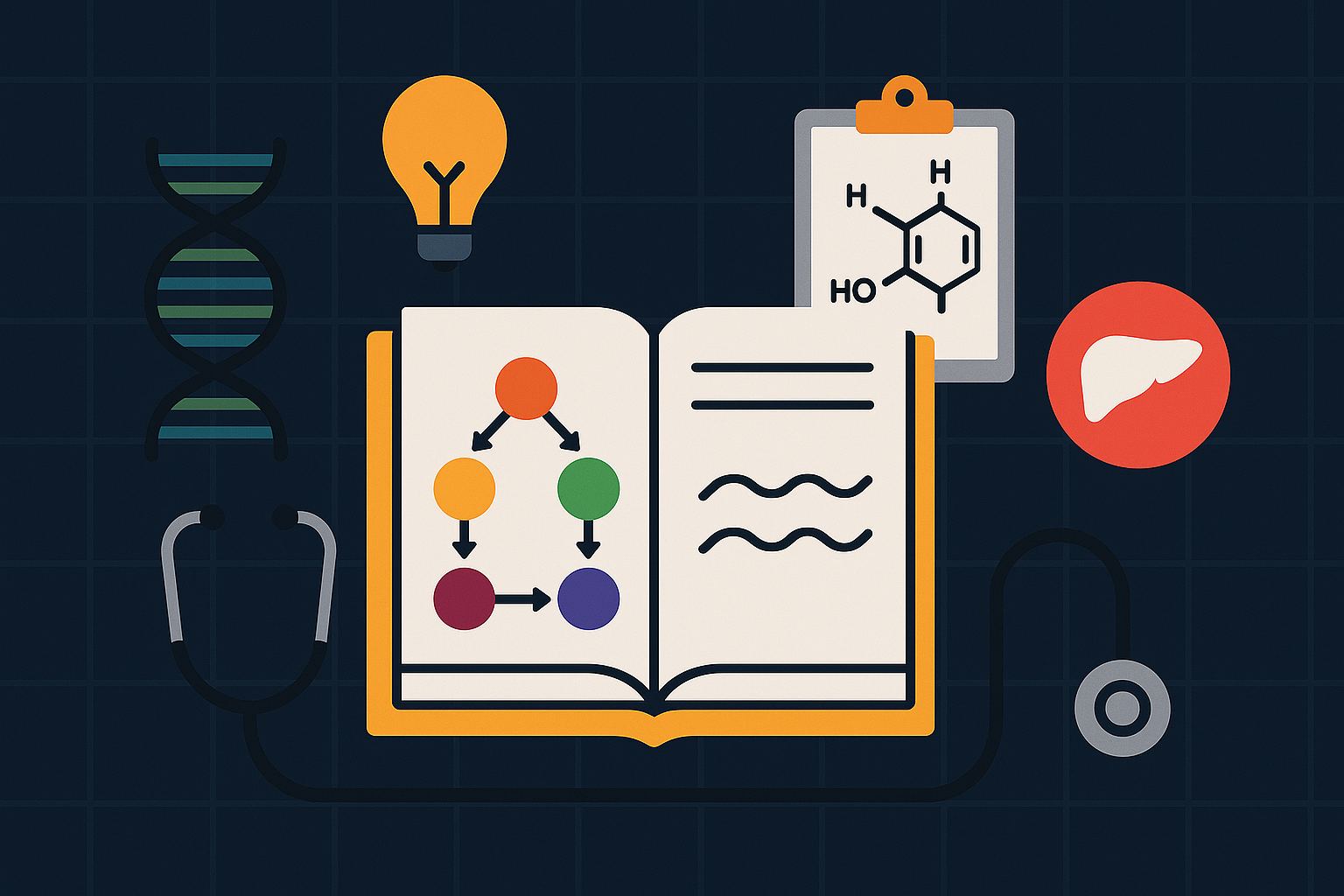TL;DR: The best
Step 1 Anki decks in 2025 are
AnKing Step (comprehensive, continuously updated),
Lightyear (curriculum-synced video-first),
Duke Pathoma (concise path), and
Pepper Sketchy Micro/Pharm (visual mnemonics). Pair any deck with MDSteps’ Adaptive QBank + analytics and generate automatic Anki decks from your misses to lock in recall.
How We Ranked the Best Anki Decks for Step 1 in 2025: Criteria That Matter
Step 1 retention lives at the intersection of coverage, card quality, and update cadence. This ranking weights (1) comprehensiveness of preclinical coverage (biochem → phys → path ↔ pharm); (2) organizational quality (tagging by resource/system, note type consistency, cloze quality, media stability); (3) community support and updates (sustained maintenance, documented changelogs); (4) integration with a daily QBank workflow; and (5) ease of onboarding for a new user inside Anki (settings, ease of suspending, filtered reviews). We also tested fit with a disciplined study loop: questions → analytics → targeted reviews → spaced retention.
Quality Anki use builds on two learning-science pillars: the testing effect (active retrieval strengthens long-term memory) and spaced practice (optimally distributed reviews beat cramming). Your deck must therefore be amenable to frequent, short retrieval reps and predictable spacing intervals. This favors decks with consistent note types, stable tags that align to your curriculum, and reliable updates that avoid “card rot.” Beyond deck choice, your workflow must connect cards to high-yield clinical reasoning. That’s where MDSteps’ Adaptive QBank and readiness analytics guide what to drill next; our automatic flashcard deck creation from your misses (& exportable to Anki) closes the loop by feeding your spaced repetition with exactly what you got wrong.
Finally, we considered specialization vs. generalist tradeoffs. Generalist decks (e.g., AnKing Step) reduce hunting for content and standardize your workflow; specialist decks (e.g., Pepper for micro/pharm, Duke for pathoma-style pathology) dramatically increase efficiency for specific domains when layered on top of a generalist base. The outcome we’re optimizing: rapid pattern recognition on NBME-style stems, resilient recall under time pressure, and fewer “tip-of-the-tongue” failures on first-order facts that anchor second- and third-order questions.
| Criterion | Weight | Why It Matters for Step 1 |
| Coverage & Tagging | 35% | Maps cards to systems/resources so you can target weak areas and sync with MDSteps analytics. |
| Card Quality | 25% | Clean cloze deletions, minimal extraneous fluff, consistent note types improve review velocity. |
| Update Cadence | 20% | Fixes errata, aligns with current teaching, keeps media and tags stable. |
| Community & Onboarding | 10% | Reliable setup docs, migration guides, troubleshooting reduces friction. |
| Integration Fit | 10% | Plays nicely with questions-first learning and MDSteps’ auto-miss-to-Anki pipeline. |
#1 — AnKing Step Deck (2025): The Comprehensive Standard
Why it ranks first: In 2025, the AnKing Step Deck remains the most actively maintained, comprehensive, and resource-tagged collection for Step 1. It aggregates and standardizes the best of prior community decks with robust tagging across first-line resources. Critically, it benefits from an AnkiHub sync model with ongoing community contributions and updates, minimizing card decay and consolidating errata.
Best for: Students who want a single “home base” deck that spans MS1–MS2 and dedicated. If you prefer a predictable, systems-by-systems march that mirrors your coursework and MDSteps analytics, AnKing’s tag architecture makes filtered reviews and targeted drilling straightforward.
How to use it effectively: (1) Start with a modest new-card cap (e.g., 40–60/day) while maintaining 60–90 minutes of reviews. (2) After each MDSteps QBank session, export your missed items to create automatic Anki cards; merge/tag these alongside AnKing tags so your spaced reps reflect your true competency gaps. (3) Use filtered decks to interleave weak systems (e.g., biochem + immuno). (4) Periodically prune leeches and suspend overly redundant cards to keep daily load sustainable.
Setup pointers: Install via AnkiHub, subscribe to the deck, and enable updates. Keep media folders intact, and snapshot your collection weekly. If you’re midstream with another deck, migrate gradually by suspending duplicates rather than mass deletions to protect scheduling history.
#2 — Lightyear (2025): Video-Centered & Curriculum-Synced
Why it’s compelling: Lightyear organizes cards to mirror common preclinical video curricula, making it intuitive if your school teaches in that sequence. Its strength is onboarding: if you watch a lecture/video, the next set of cards matches the content in digestible order. Community-maintained variants (e.g., Lightyear “compendium/infinity” style updates) aim to patch omissions and modernize tags while preserving the video-first flow.
Best for: Learners who prefer to anchor memory to audiovisual explanations and then reinforce with QBank items. If you’re coming from a video-heavy plan and want to drill “freshly taught” concepts that same day, Lightyear’s structure reduces the friction of finding the right cards.
Usage workflow: Pair each video block with a short MDSteps QBank set to test comprehension, then immediately review Lightyear cards tagged to that topic. Import your MDSteps misses into Anki to fortify that module. For dedicated, interleave Lightyear subdecks by system (e.g., cardio path → renal phys) to encourage discrimination—an evidence-backed way to boost inductive learning. If you later move to a generalist deck, keep Lightyear as a targeted refresh bank and suspend overlap.
Caveats: Variant forks differ in coverage and maintenance quality. Audit the tags and media stability before committing. If your school sequence diverges from Lightyear’s, consider re-tagging or filtered decks to reduce context switching.
Master your USMLE prep with MDSteps.
Practice exactly how you’ll be tested—adaptive QBank, live CCS, and clarity from your data.
What you get
- Adaptive QBank with rationales that teach
- CCS cases with live vitals & scoring
- Progress dashboard with readiness signals
No Subscriptions • No Credit Card to Start
Create your account
#3 — Duke Pathoma: Lean Pathology Reinforcement
Why it shines: Duke’s Pathoma deck distills pathology into focused, relatively “beefy” cards that complement Pathoma-style reasoning. The emphasis is on anchoring mechanisms and prototypical lesions rather than maximal detail sprawl. If your Step 1 weakness is core pathophysiology, Duke provides a compact spine for structured review, especially during the final 4–6 weeks.
Best for: Students who want a concise path checklist layered onto a broader deck (e.g., AnKing) and MDSteps question sets. It’s also useful for morning warm-ups: 15–20 minutes of Duke before diving into mixed QBank blocks keeps the big-picture pathology map active.
Usage workflow: Build a filtered deck keyed to the systems you missed in MDSteps (e.g., heme/onc path). After each mixed block, append misses to a “Duke-Path Refresh” filtered deck and review to first Good. Keep daily reviews manageable by suspending redundant cards (if the concept is well-covered elsewhere). During dedicated’s final two weeks, rotate 2–3 systems/day to maintain interleaving.
Caveats: As a focused resource, Duke is not a one-stop deck. Treat it as a scalpel for core path and rely on MDSteps analytics to decide which systems to prioritize.
#4 — Pepper Sketchy Micro/Pharm: Visual Mnemonics on Speed-Dial
Why it’s still a staple: For micro and pharmacology, Pepper-style cards compress visual mnemonic scenes into high-yield bite-size prompts. This format excels at rapid recognition of organism traits, toxins, and drug mechanisms—exactly the kind of atomic facts that unlock multi-order questions. It’s perfect for a 10–15 minute micro/pharm power-up between longer study blocks.
Best for: Learners who think in images and need quick retrieval of organisms, resistance mechanisms, and antidotes. Pepper is also an excellent maintenance layer during clinical transitions when your memory of bugs and drugs starts to fade.
Usage workflow: Keep Pepper in a separate subdeck with a small daily new-card cap (10–20) and a strict review ceiling (≤20 minutes/day). After a mixed MDSteps block flags a micro/pharm miss, instantly add that concept to a Pepper filtered deck for same-day reps. On weekends, run a 30–40 minute consolidation to push any leeches to targeted tags and rework them with simpler clozes.
Caveats: Pepper is intentionally concise; supplement with your generalist deck for mechanisms and cross-links. Ensure your version is actively maintained or hosted in a stable repository to avoid media breakage.
The “Actually Use Them” Plan: Settings, Caps, and Integration with MDSteps
Daily cadence: Aim for 60–90 minutes of reviews and 40–60 new cards on weekdays; halve new cards on heavy exam or QBank days. Front-load reviews in the morning when decision fatigue is low. Insert one 40–60 minute MDSteps Adaptive QBank block midday; immediately export misses to an Auto-Misses deck (MDSteps generates these automatically and they’re exportable to Anki). Run a 15-minute evening review on the new Auto-Misses plus any flagged leeches.
Card settings (baseline): Keep learning steps short (e.g., 10m → 1d), graduating interval ~3–4d, and an Easy interval slightly longer than graduate (e.g., 5–6d). Maintain a conservative new card cap (start at 40/day) and a review cap that fits your schedule (e.g., 250–300). Prune leeches at 8–10 lapses. As your retention stabilizes, nudge intervals up; if your review pile regularly exceeds 90 minutes, reduce new cards before anything else.
Question–card loop: Every missed QBank concept becomes a card. MDSteps’ analytics identify weak systems; create filtered decks by tag (e.g., tag:renal, tag:biochem) and interleave with your baseline deck. This converts the testing effect into durable gains: retrieve under pressure, then space the concept to keep it alive.
Maintenance & hygiene: Weekly, audit tags/media, clear duplicates, and archive snapshots. Suspend cards that repeatedly test the same nucleus of knowledge. Use custom study to top up recently learned material before cumulative mixed blocks. Lean on MDSteps’ readiness dashboard to decide when to throttle new cards vs. add more questions.
| Setting | Starter Value | Adjust If… |
| Learning steps | 10m → 1d | Increase to 10m→8h→1d if you keep forgetting within 24h. |
| Graduating interval | 3–4 days | Shorten to 2–3d if early lapses rise; lengthen to 5–6d if ease stays high. |
| Easy interval | 5–6 days | Keep ≥ graduating interval; lengthen if cards feel trivial. |
| New cards/day | ~40 | Drop to 20–30 during heavy MDSteps blocks; increase slowly if reviews < 60 min. |
| Leech threshold | 8–10 lapses | Refactor into simpler clozes or tag for dedicated remediation. |
Deck-by-Deck Usage Recipes (with a 7-Day Pilot Schedule)
AnKing Step — “One-Deck Spine”: Start with 40 new/day, reviews first thing each morning. After a 40–60 minute MDSteps Adaptive QBank block, export misses and tag by system. Create a filtered deck called AK-Targeted that pulls (tag:misses + weakest systems). Evenings: 15-minute clean-up pass on leeches.
Lightyear — “Watch, Quiz, Reinforce”: Watch the assigned video, do a 10–20Q MDSteps micro-block from the same topic, then immediately review the Lightyear subdeck. On weekends, run a mixed-system Lightyear filtered deck to induce interleaving. If you later pivot to AnKing, suspend duplicates; keep Lightyear for just-in-time refreshers.
Duke Pathoma — “Path Pulse”: Every morning, 20–25 minutes of Duke on yesterday’s weakest system. After mixed QBank blocks, append relevant Duke tags and review to first Good. Two weeks pre-exam, rotate systems in 90-minute cycles: path pulse → MDSteps mixed block → targeted Duke refresh.
Pepper Micro/Pharm — “Fast Recall”: Cap new at 10–20/day. Between longer blocks, do 5-minute Pepper sprints. Any micro/pharm miss becomes a Pepper card seeded into a filtered deck called Pepper-Fix. Weekly 30-minute consolidation merges Pepper-Fix into the main Pepper subdeck.
| Day | Morning | Midday | Afternoon | Evening |
| Mon | AnKing reviews (60–90m) | MDSteps 40Q block | Lightyear module + reviews | Pepper sprint (10m) + Auto-Misses |
| Tue | Duke Path pulse (20m) + AK reviews | MDSteps mixed 40Q | Filtered AK-Targeted (weak systems) | Pepper sprint + leech refactor |
| Wed | AK reviews | MDSteps 40Q | Lightyear module | Auto-Misses + custom study |
| Thu | Duke Path pulse + AK reviews | MDSteps mixed 40Q | AK-Targeted interleaving | Pepper sprint |
| Fri | AK reviews | MDSteps 40Q | Lightyear module | Auto-Misses sweep |
| Sat | NBME-style 80Q MDSteps self-assessment | Review & tag misses → Anki | AK-Targeted (weakest systems) | Lightyear mixed-system pass |
| Sun | Light review only (≤45m) | Optional Pepper consolidation (30m) | Plan next week via MDSteps dashboard | Early shutdown |
Tip: Tie your Anki workload to your MDSteps readiness dashboard—when a system dips below target accuracy, shift 20–30% of your new cards to that system’s tags until stability returns.
Rapid-Review Checklist & Download Links (2025)
Rapid-Review Checklist
- Pick a spine: AnKing as the default; add Lightyear for video-sync, Duke for path, Pepper for micro/pharm.
- Protect mornings for reviews: 60–90 minutes before new learning.
- Questions fuel cards: Do MDSteps blocks daily; export misses to Anki automatically.
- Interleave weak systems: Use filtered decks with MDSteps tags to enforce discrimination.
- Cap the load: Adjust new-card and review caps so total Anki time ≤ 2 hours on class days.
- Fix leeches weekly: Refactor into simpler clozes, add images, or tag for remediation.
- Snapshot collections: Weekly backups; avoid mass deletions—suspend instead.
- Let analytics lead: MDSteps readiness dashboard decides where your next 100 cards come from.
2025 Download/Setup Links
Reminder: MDSteps can generate automatic flashcard decks from your QBank misses (exportable to Anki), includes a study plan generator, an AI tutor for explanations, and a full analytics/readiness dashboard to guide your next reps.
References & Further Reading
100+ new students last month.






